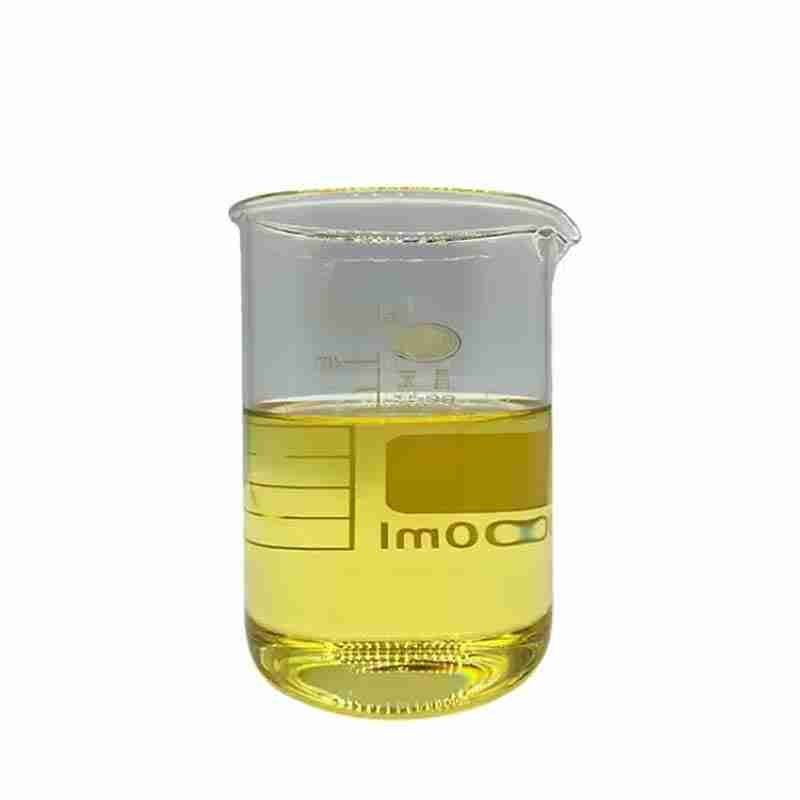Hydroxyethyl Cellulose CAS# 9004-62-0
Hydroxyethyl cellulose is a commonly used cellulose ether organic water-based ink thickener. It is a water-soluble non-ionic compound. It has good thickening ability for water and can be degraded by oxygen, acid and enzyme. It can be cross-linked by Cu2+ under chemical conditions. It is stable to heat, does not gel when heated, does not precipitate under acidic conditions, and has good film-forming properties. Its aqueous solution can be made into a transparent film, which can be formed by the interaction of alkaline cellulose and ethylene oxide.
发送询盘
Hydroxyethyl Cellulose CAS# 9004-62-0
| Hydroxyethyl Cellulose Basic information |
| Thickeners and binders?Chemical properties?Uses?Production methods |
| Product Name: | Hydroxyethyl Cellulose |
| Synonyms: | ah15;aw15(polysaccharide);aw15[polysaccharide];bl15;Natrosol L 250;hydrdoxyethyl cellulose;2-HYDROXYETHYL CELLULOSE, AVERAGE MV CA. 90,000;2-HYDROXYETHYL CELLULOSE, AVERAGE MV CA. 1,300,000 |
| CAS: | 9004-62-0 |
| MF: | C29H52O21 |
| MW: | 0 |
| EINECS: | 618-387-5 |
| Product Categories: | Cellulose;pharmaceutical,food,Construction;Carbohydrates;Carbohydrates A to;Carbohydrates H-LBiochemicals and Reagents;Polysaccharide;Cnbio;Materials Science;Natural Polymers;Polymer Science;Polymers;Natural Polymers;Polymer Science;cosmetic;Disinfectants;bc0001;9004-62-0;HEC |
| Mol File: | Mol File |
| Hydroxyethyl Cellulose Chemical Properties |
| Melting point | 288-290???C (dec.) |
| density | 0.75?g/mL?at 25???C(lit.) |
| storage temp. | 2-8??C |
| solubility | H2O: ??5?wt. % at?20???C |
| form | powder |
| color | hite to yellowish fibrous |
| Odor | Odorless |
| PH | pH(20g/l,25??) : 5.0??8.0 |
| Water Solubility | almost transparency |
| Merck | 14,4673 |
| Stability: | Stable. Incompatible with strong oxidizing agents, acid chlorides, acid anhydrides |
| InChIKey | CWSZBVAUYPTXTG-UHFFFAOYSA-N |
| SMILES | O1C(CO)C(OC2C(O)C(O)C(OC3C(OCCO)C(O)C(OC)C(CO)O3)C(COC3C(O)C(O)C(OC)C(CO)O3)O2)C(O)C(O)C1C |
| CAS DataBase Reference | 9004-62-0(CAS DataBase Reference) |
| EPA Substance Registry System | 2-Hydroxyethyl cellulose (9004-62-0) |
| Safety Information |
| Hazard Codes | T |
| Risk Statements | 23/24/25-36/37/38 |
| Safety Statements | 26-36-45-24/25-22 |
| WGK Germany | 3 |
| RTECS | FJ5958000 |
| F | 3 |
| Autoignition Temperature | 725 ??F |
| HS Code | 39123980 |
| Hazardous Substances Data | 9004-62-0(Hazardous Substances Data) |
| Toxicity | LDLo intravenous in women: 5100mg/kg/6D- |
- 2
- 2-diallylpent-4-en-1-amine
- 4
- 95-16-9
- Ammonium sulfamate
- Benzothiazole
- cas:67889-00-3ح2
- cas:83524-75-8 | pigment black 32
- cas:928836-00-4 | 2
- cas:932745-70-5 | 4
- Chemical Minerals
- Coconut diethanolamide
- Daily Chemicals
- discount
- for sale
- General pvc resin
- hexyl D-glucoside
- in stock
- Lauramidopropyl betaine
- LAURIC ACID MONOETHANOLAMIDE
- Petroleum Additives
- Plasticiser
- Ploymers
- price
- PVC
- quotation
- Raw Materal
- Remove term: Petroleum Additives Petroleum Additive
- SODIUM ETHYL 2-SULFOLAURATE
Related Products
Chemical Name: Quercetin-3-O-sophoroside
CAS No.: 18609-17-1
Molecular Formula: C27H30O17
Molecular Weight: 626.52
N,N-Dimethylaniline is an organic compound with amine and methyl groups attached to a benzene ring. It is a colorless liquid with a characteristic amine odor. This compound is primarily used as a chemical intermediate in the synthesis of dyes, pigments, and polymers. Its reactivity makes it a valuable building block in the production of various organic compounds, particularly in the pharmaceutical and chemical industries.
Chemical Name: Ammonium Iron(II) Sulfate
Synonyms: Diammonium iron bis(sulphate); iron (ii) ammonium sulfate
CAS No.: 10045-89-3
Molecular Formula: FeH5NO4S
Molecular Weight: 170.95
Chemical Name: Zinc citrate
Synonyms: Zinc citrate trihydrate
CAS No.: 546-46-3
Molecular Formula: C6H8O7Zn
Molecular Weight: 257.5
Appearance: White powder
Chemical Name: o-Xylene
Synonyms: 1,2-Dimethylbenzene; ortho-xylene
CAS No.: 95-47-6
Molecular Formula: C8H10
Molecular Weight: 106.17
POLY(VINYL CHLORIDE-CO-ISOBUTYL VINYL ETHER) is a copolymer that combines the properties of vinyl chloride and isobutyl vinyl ether. This polymer offers a balance of rigidity and flexibility, along with enhanced chemical resistance and durability. It is commonly used in the production of films, coatings, and adhesives due to its excellent barrier properties against gases and moisture, making it ideal for packaging and construction applications.
Chemical Name: UV-120
Other Name: (2’,4’-Di-tert-butylphenyl 3,5-di-tert-butyl-4-hydroxybenzoate)
CAS No.: 4221-80-1
Molecular Fomula: C29H42O3
Molecular weight: 438.66
Assay: ≥99%(LC)
Chemical Name: STODDARD SOLVENT
CAS No.: 64742-88-7
Appearance: Colorless or Light Yellow Liquid
Chemical Name: Arabic gum
CAS No.: 9000-01-5
Appearance: powder
3,4-Ethylenedioxythiophene is a synthetic organic compound characterized by its unique structure that includes a thiophene ring with ethylenedioxy substituents at the 3 and 4 positions. This compound is known for its potential applications in the synthesis of various organic materials, including pharmaceuticals and organic electronic devices such as sensors and solar cells. Its stability and reactivity make it a versatile intermediate in the chemical industry.
Product name:Cyclopentane
Purity:96%
Appearance:White powder
Package:25kg/bag
Sample:Available
Polyhexamethylene guanidine hydrochloride, often abbreviated as PHMG-HCl, is a high molecular weight polymeric biguanide compound known for its potent antimicrobial properties. With a chemical structure that features a long chain of methylene groups bridged by guanidine units, PHMG-HCl is effective against a broad spectrum of microorganisms, including bacteria, viruses, and fungi.
This hydrochloride salt form of PHMG is highly soluble in water and is commonly used in various applications due to its non-irritant and non-toxic nature to human skin and mucous membranes. It is widely recognized for its ability to form a colorless and odorless solution, making it an ideal choice for use in personal care products, medical disinfectants, and water treatment processes.
The versatility of PHMG-HCl lies in its cationic nature, which allows it to bind to negatively charged microbial cell walls, disrupting their integrity and leading to cell death. This mechanism of action contributes to its effectiveness as a preservative and disinfectant. Moreover, its substantivity, or the ability to adhere to surfaces, enhances its long-lasting antimicrobial activity.
In summary, Polyhexamethylene guanidine hydrochloride is a reliable and efficient antimicrobial agent, pivotal in industries where hygiene and cleanliness are paramount, offering a safe and sustainable solution for microbial control.


















